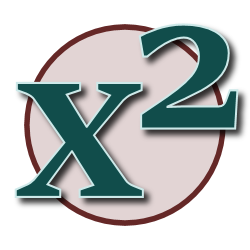Testing Your Algebraic Expressions
Lesson Plans > Mathematics > Algebra > ExpressionsTesting Your Algebraic Expressions

Taking an English language phrase and converting it into an algebraic expression - that can be a challenging exercise. Especially for students just beginning Algebra, who are not used to the process. Even simple phrases like "3 less than a number" can trip students up, because they automatically think: "less than" means "subtract," so the answer must be "3 - n." The correct answer, of course, is "n - 3."
So how do we help students with this process? We guide them with reminders about which phrases represent which operations, and in which order the operands go. We remind them about groupings and parentheses. But even with repeated reminders, students will still get it wrong. It's frustrating for the students, and it's frustrating for the teachers.
Here's a technique you can teach the students, which will not (necessarily) give them the right answer, but it will (hopefully) help them recognize when their answer is wrong.
The technique follows these steps:
- Convert the phrase into an algebraic expression.
- Pick a number, and stick it into the phrase (not the expression)
- Now stick that same number into your expression
- Do these match? If they don't, your expression is wrong
- If they do match, you may want to try a different number (steps 3 - 4) just to double-check.
Let's take a look at the example above: "three less than a number."
- Andy Algebra Student decides this is the same as 3 - x.
- Andy picks the number seven, and plugs it into the phrase: 3 less than 7 is 7 - 3 = 4
- Andy now plugs it into his expression: 3 - 7 = -4
- Uh oh! They don't match. So the expression is wrong
Having Andy actually write out what he does when plugging the number into the phrase may even help him figure out where he went wrong: "7 - 3 looks backwards from 3 - x," Andy might think.
Here's another example: Three times four less than a number
- Andy decides this is the same is 3 · 4 - n
- Andy picks the number 10 and plugs it into the phrase: four less than then is 6, and 3 times that is 18.
- Andy plugs it into his expression: 3 · 4 - 10 = 12 - 10 = 2
- Uh oh, again!
Hopefully Andy will notice that the order he did this in was the subtraction first, then the multiplication, and this may remind him that he needs some parentheses.

